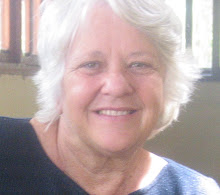Did you know that electricity can be made from anything that creates constant motion? One of the most common ways to make electricity is to use the motion of water falling, like a waterfall, and change the energy of that movement into electric power that is then sent through wires to homes and businesses. A huge waterfall can provide enough energy to supply electricity to many cities.
Another way to make electricity is to use heat to provide the energy that is turned into electric power. A popular method in the United States is to burn coal for its heat, but this is a polluting method that produces lots of carbon dioxide. This is one of the reasons that anyone who wants to fight global warming needs to use less electricity every day. We need whole cities to use less electricity.
Clean ways to make electricity include the giant windmills that we can see now along mountain ridges and in the ocean near the shore. Today I read about a way that a college in California is making electricity: when hundreds of students go to the fitness center to walk on treadmills and ride stationary bikes, the college captures the energy from all that motion to make electric power. Isn't that super?
From Nana Greta




